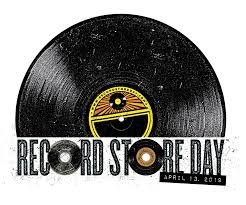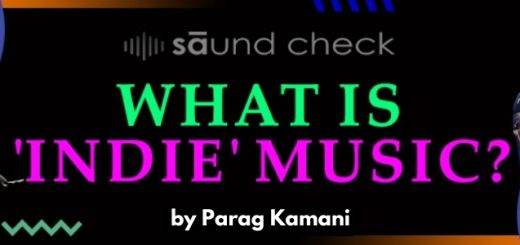Blockchain strikes a chord for Indian music industry stakeholders

The one lament that appears to have been heard forever, especially within the Indian music business, is that songwriters do not receive their fair share of royalties. Nevertheless, depending on which part of the trade you side, your answer would probably differ. However, with the introduction of blockchain technology in the Indian recording industry, the answer finally appears to be a singular one with the uniqueness of this technology bringing in trust among all stakeholders by rendering the lack of transparency obsolete and, with it, resolving the distinctive disconnect that appears to have existed among owners of music content, songwriters, and artists.
While it has conventionally been the case of fingers being pointed towards music labels for lack of transparency, let us agree that the system that existed in the days of the physical format was certainly antiquated where recording companies, music publishers, and rights societies spent thankless hours – and unaccountable overheads – attempting to monitor royalties. However, in a digital world, the necessity of taking the learnings from the past and turning them into a present for the future was certainly the need of the hour, and several sincere global attempts were made, since the late ’90s, to resolve the ailment of non-transparency. For instance, in 1998, the International Music Joint Venture (IMJV) became the first association to create a database between multiple collective management organizations [CMOs] but, with severe differences on how to move the initiative forward, in late 2001, IMJV stood dissolved. Next on the list of initiatives was the Global Repertoire Database which was started in September 2008. This entity had representatives from publishing houses, record labels, Google, iTunes, and 13 CMOs, jointly creating a comprehensive database for the international music industry. However, for reasons best known to them, various CMOs eventually pulled out, and this initiative too was soon relegated to history. Last and, perhaps, not the least, in 2011, the International Music Registry (IMR) was launched with the database initiative being headed by the World Intellectual Property Organization (WIPO) that encompassed not only musical compositions, but also recordings. While Google agreed to fund the initiative, one reason for the association falling apart was WIPO subsequently believing that the alliance would provide Google an unfair hold over the international music industry.
However, an initiative in the recent past supporting blockchain technology, and closer to home that occurred hear and now was the brainchild of Rajat Kakar, the then managing director & CEO of the Phonographic Performance Limited [PPL] in India, who proposed setting up SoundSys [soundsys.org], an entity incorporated in Singapore last year, consisting of four collection societies – all having joint, and equal ownership – which, besides PPL, included: PNR Phonorights [from Thailand], ASIRINDO [Indonesia], and MRSS Music Rights Society Singapore Public Limited – formed under the aegis of the regional office of IFPI [International Federation of the Phonographic Industry], a non-profit organisation that represents the interests of the global recording industry worldwide.
Prior to SoundSys, each country was doing its own bit in uploading databases. However, what was required was a unified body with content usage data being inputted into a singular system and, as part of the output, everyone in the system becoming aware of what is payable to whom. Effectively, in doing away with working on individual silos, SoundSys ensured the creation of a common database as its technology commenced talking, simultaneously, to all members within the respective collection societies.
Hence, SoundSys has since become a back-office distribution system for Music Licensing Companies (MLCs) and, in turn, also becoming the recorded music industry’s first shared, cloud-based fully scalable member-managed repertoire database with a matching and a producer distribution system. It uses state of the art technologies for indexing, matching, and searching, and is compliant with the latest data supply formats, including DDEX RDR.
MLCs license their usage of music for public performance and broadcast, distributing the license fees back to the respective right holders that they represent, whereas SoundSys provides a repertoire and rights management database, a processing facility for usage logs, as well as all the distribution and reporting systems needed by MLCs in their back-office work. Effectively, SoundSys provides flexibility to MLCs to create, and implement, its distribution policy and schedules as required.
The technology behind SoundSys’ initiative is being handled by Barcelona Music and Audio Technology (BMAT), based in Barcelona, Spain, which appears to be a perfect fit for SoundSys as BMAT apparently services more than 100 music licensing companies, over two thousand record labels and publishers, monitors 92 million identifications monthly, processes 100 million sales from YouTube, Spotify, Apple Music, Amazon and 40 other digital platforms, every hour, along with tracking 5,000 radio stations, 1,500 television channels, and 1,000 pubs/clubs, across 134 countries, on a 24/7 basis.
 BMAT, as its blockchain technology gains a stronger foothold in the Indian market, proposes to provide the facility of fingerprinting, something that the company is extremely conversant with, keeping in mind that it has already created more than 72 million fingerprints. Marketers will also receive real-time data and, with retail and hospitality industries being closely monitored, members will be able to see their revenues on a real-time basis through a dedicated dashboard that would specify the city of consumption, outlet, and time of usage, among other details.
BMAT, as its blockchain technology gains a stronger foothold in the Indian market, proposes to provide the facility of fingerprinting, something that the company is extremely conversant with, keeping in mind that it has already created more than 72 million fingerprints. Marketers will also receive real-time data and, with retail and hospitality industries being closely monitored, members will be able to see their revenues on a real-time basis through a dedicated dashboard that would specify the city of consumption, outlet, and time of usage, among other details.
Now that every computer, tablet, and smartphone has turned into a music store, rights ownership information has gained primary importance for artistes, publishers, labels, and other copyright owners. With blockchain technology ensuring that all transactions are encrypted and, whenever a change occurs, a copy of that changed record is forwarded to all those represented on the network through an inbuilt algorithm, results in all ledgers containing the same records. SoundSys has established all this while breaking down geographical barriers as blockchain closes the link between performers and consumers.
As more players enter an already overcrowded market, including a lot of companies having captive subscribers who have been offered streaming services, is leading to blockchain becoming an essential service for its stakeholders. Further support for the technology is inherent as it actually brings down the cost of administration, prevents any kind of revenue leakage for rights owners, and overcomes an otherwise complex system which used to entail years for disbursement of monies to rights owners. Further, by reducing overheads, makes it more viable to enhance revenues which could either be invested in furthering technology or, as the case is, having more funds available for distribution across stakeholders.
At a time when there still exist no-sayers for unproven opportunities and the possible risks that accompany them, it is only through this path-breaking blockchain technology that shifts will occur. Credit, no doubt, deserves to be provided to PPL in defying convention and proceeding with an obvious disruption to the traditional manner of pursuing music business in India. With the intent of securing a more robust rights system as the underlying theme, the blockchain-based rights tracking system is undeniably the way forward and, with it, the inherent scalable architecture that goes with it.
The introduction of SoundSys technology’s blockchain system going live last year certainly resulted in an era of rejoicing as the Indian way of doing musical business got disrupted forever…
Read part 1 here >> | For part 3, SAbscribe to the #SAmachar newsletter here >>









